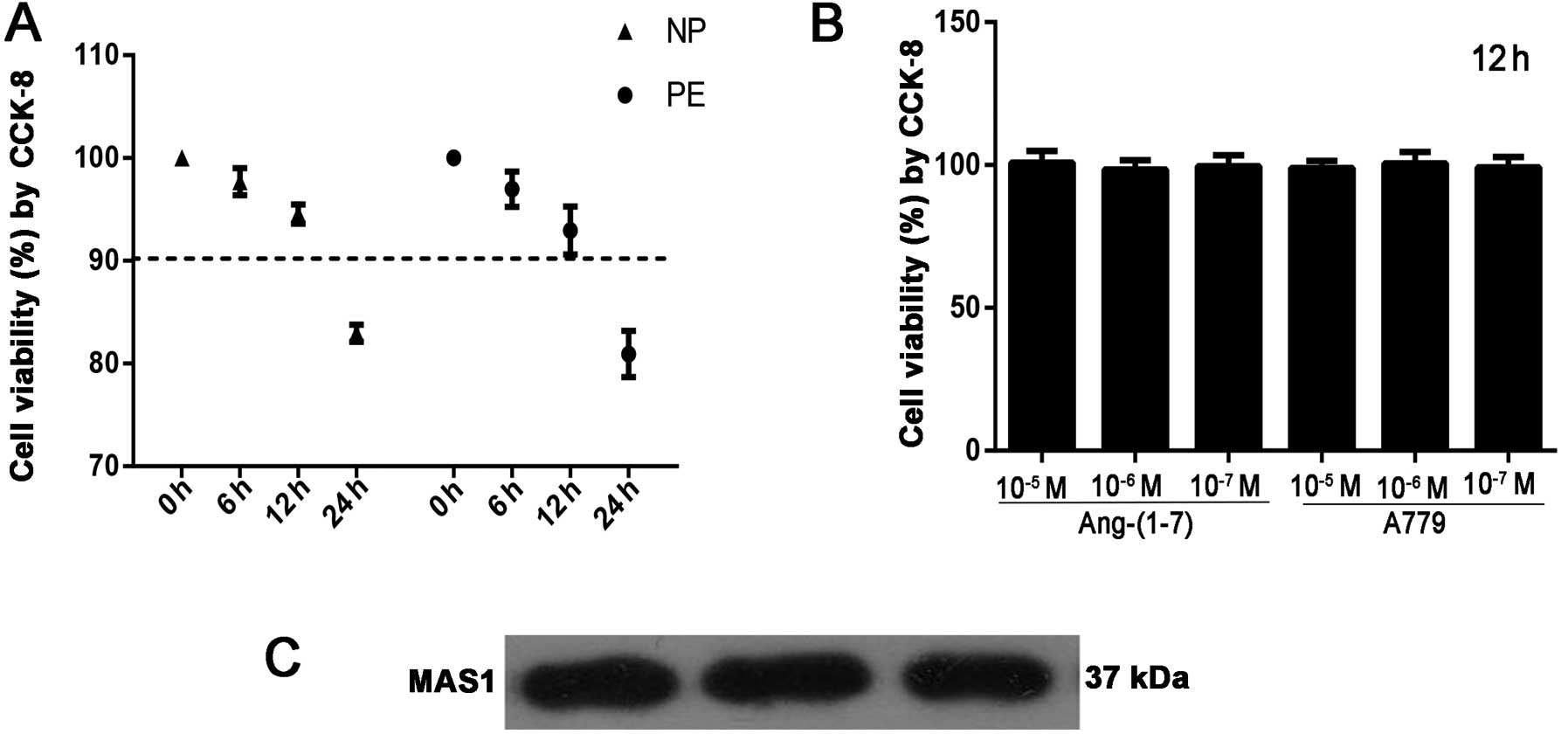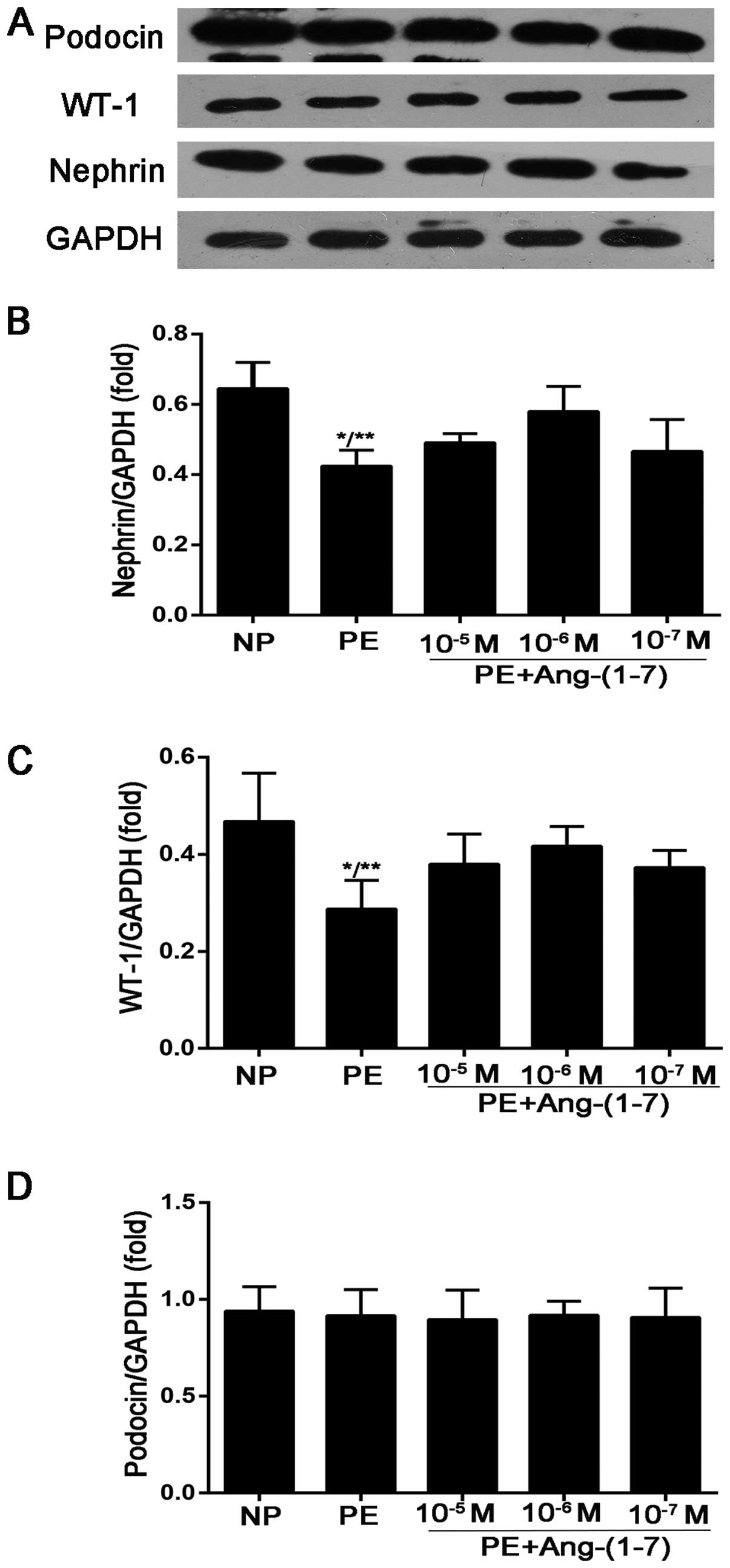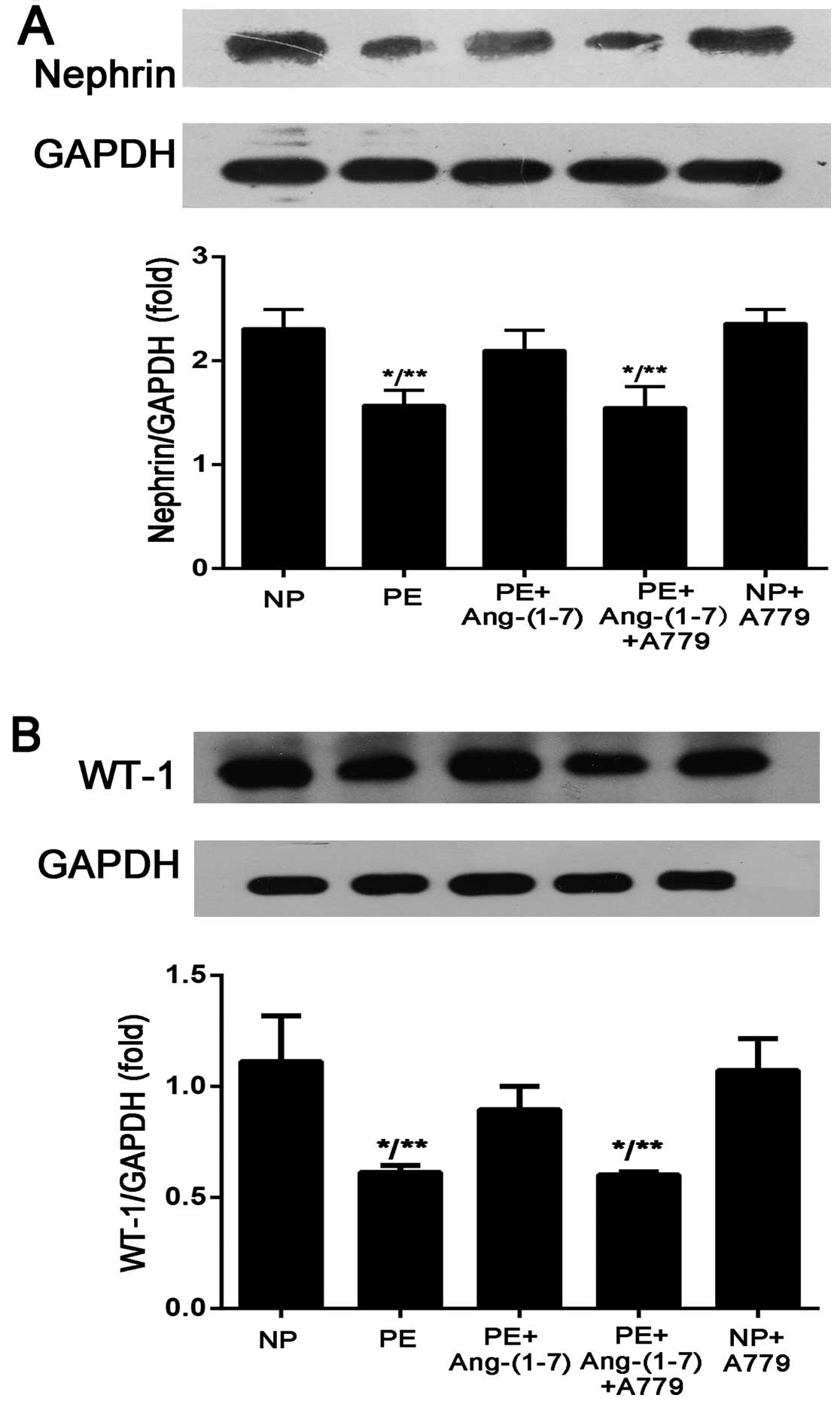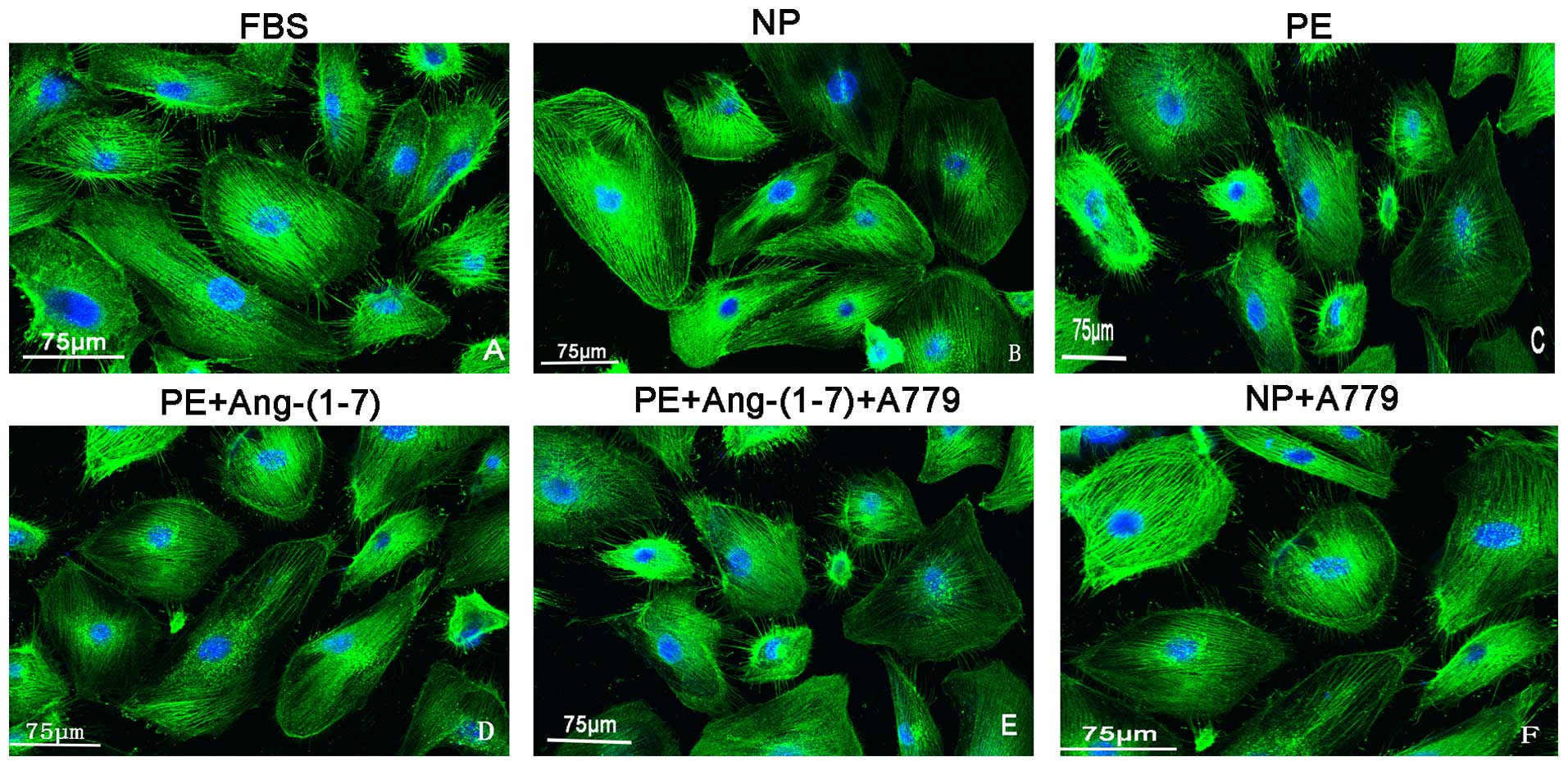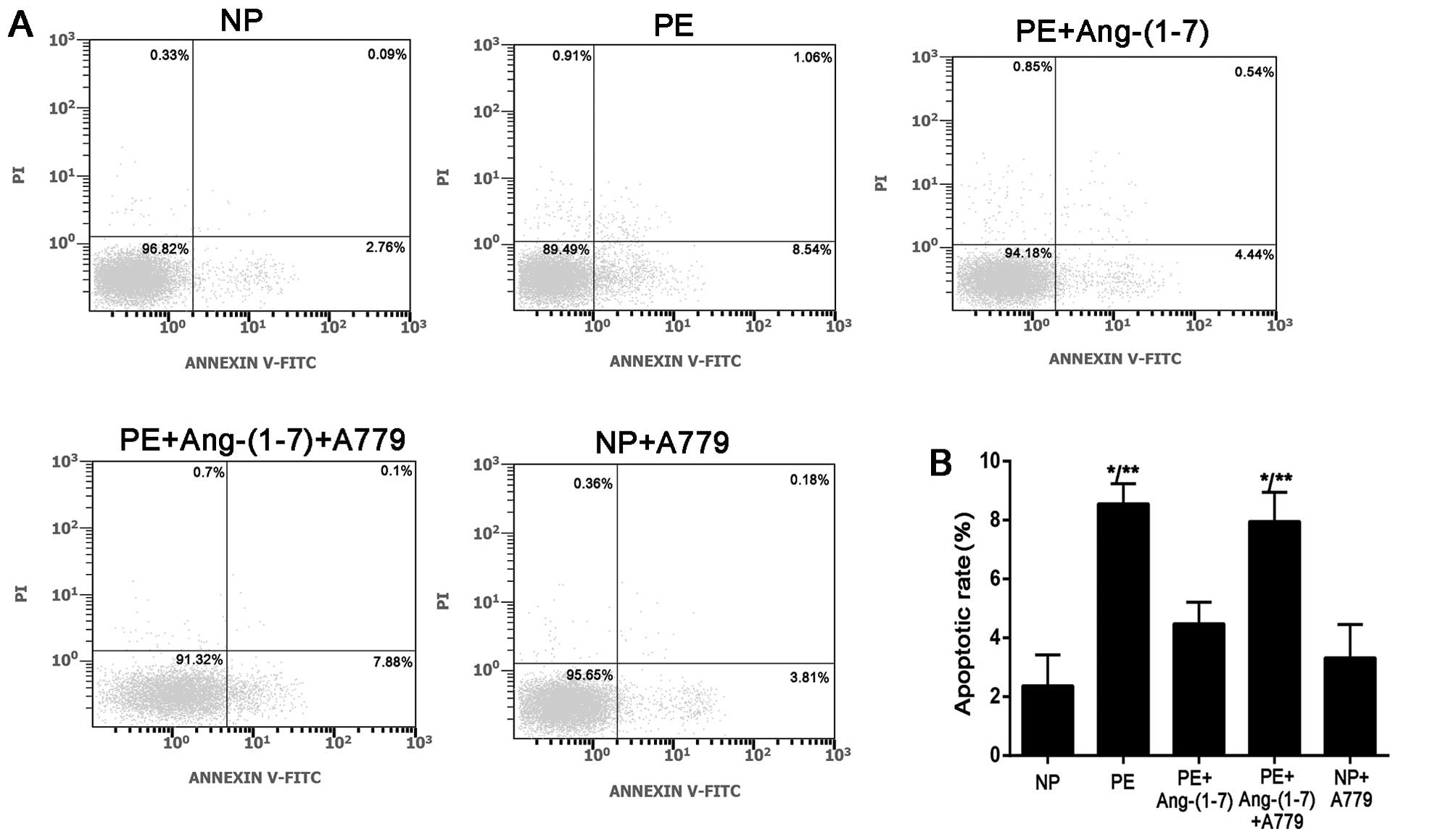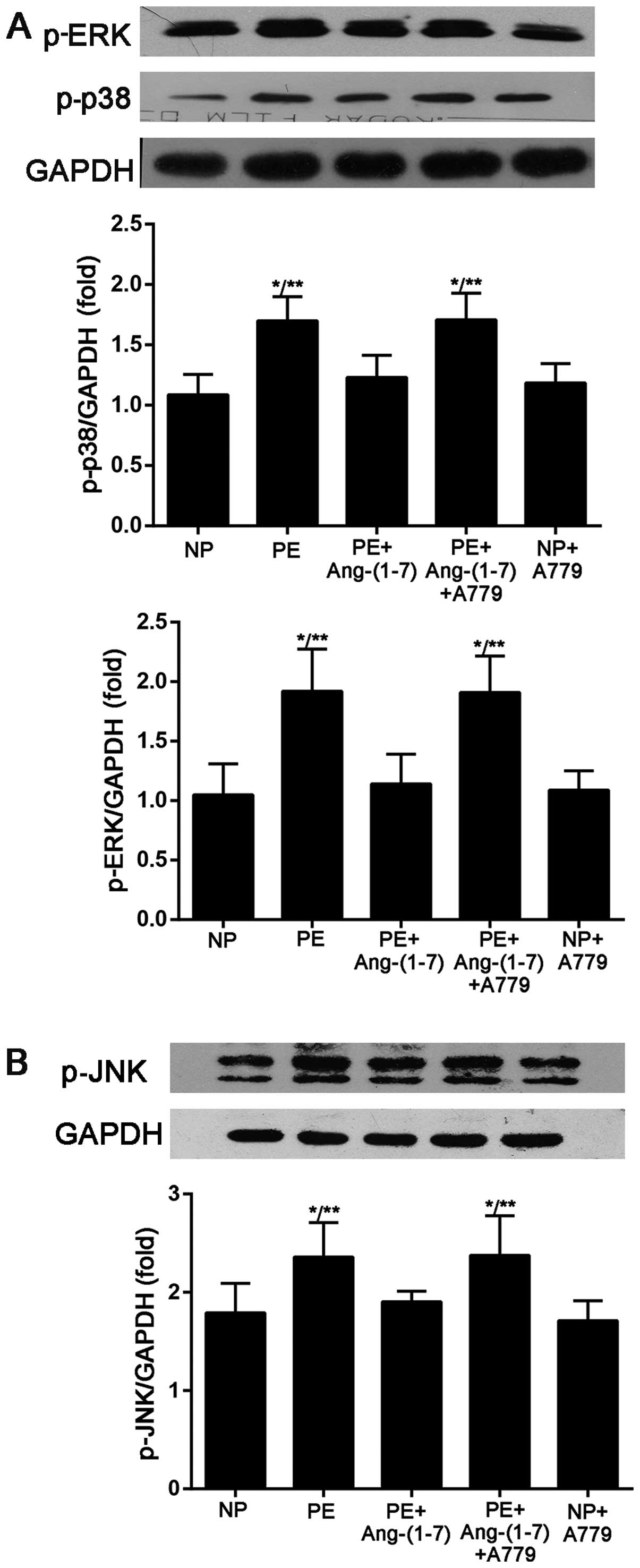|
1
|
Walker JJ: Pre-eclampsia. Lancet.
356:1260–1265. 2000. View Article : Google Scholar : PubMed/NCBI
|
|
2
|
Jones DC and Hayslett JP: Outcome of
pregnancy in women with moderate or severe renal insufficiency. N
Engl J Med. 335:226–232. 1996. View Article : Google Scholar : PubMed/NCBI
|
|
3
|
Levine RJ, Maynard SE, Qian C, et al:
Circulating angiogenic factors and the risk of preeclampsia. N Engl
J Med. 350:672–683. 2004. View Article : Google Scholar : PubMed/NCBI
|
|
4
|
Garovic VD, Wagner SJ, Petrovic LM, et al:
Glomerular expression of nephrin and synaptopodin, but not podocin,
is decreased in kidney sections from women with preeclampsia.
Nephrol Dial Transplant. 22:1136–1143. 2007. View Article : Google Scholar : PubMed/NCBI
|
|
5
|
Herman-Edelstein M, Weinstein T and Gafter
U: TGFβ1-dependent podocyte dysfunction. Curr Opin Nephrol
Hypertens. 22:93–99. 2013.
|
|
6
|
Shah DM: Role of the renin-angiotensin
system in the pathogenesis of preeclampsia. Am J Physiol Renal
Physiol. 288:F614–F625. 2005. View Article : Google Scholar : PubMed/NCBI
|
|
7
|
Irani RA and Xia Y: Renin angiotensin
signaling in normal pregnancy and preeclampsia. Semin Nephrol.
31:47–58. 2011. View Article : Google Scholar : PubMed/NCBI
|
|
8
|
Anton L and Brosnihan KB: Systemic and
uteroplacental renin--angiotensin system in normal and
pre-eclamptic pregnancies. Ther Adv Cardiovasc Dis. 2:349–362.
2008. View Article : Google Scholar : PubMed/NCBI
|
|
9
|
Valdes G, Germain AM, Corthorn J, et al:
Urinary vasodilator and vasoconstrictor angiotensins during
menstrual cycle, pregnancy, and lactation. Endocrine. 16:117–122.
2001. View Article : Google Scholar : PubMed/NCBI
|
|
10
|
Santos RA, Ferreira AJ, Pinheiro SV,
Sampaio WO, Touyz R and Campagnole-Santos MJ: Angiotensin-(1-7) and
its receptor as a potential targets for new cardiovascular drugs.
Expert Opin Investig Drugs. 14:1019–1031. 2005. View Article : Google Scholar : PubMed/NCBI
|
|
11
|
Merrill DC, Karoly M, Chen K, Ferrario CM
and Brosnihan KB: Angiotensin-(1-7) in normal and preeclamptic
pregnancy. Endocrine. 18:239–245. 2002. View Article : Google Scholar : PubMed/NCBI
|
|
12
|
Herse F, Staff AC, Hering L, Muller DN,
Luft FC and Dechend R: AT1-receptor autoantibodies and
uteroplacental RAS in pregnancy and pre-eclampsia. J Mol Med
(Berl). 86:697–703. 2008. View Article : Google Scholar : PubMed/NCBI
|
|
13
|
Abdul-Karim R and Assalin S: Pressor
response to angiotonin in pregnant and nonpregnant women. Am J
Obstet Gynecol. 82:246–251. 1961.PubMed/NCBI
|
|
14
|
Su Z, Zimpelmann J and Burns KD:
Angiotensin-(1-7) inhibits angiotensin II-stimulated
phosphorylation of MAP kinases in proximal tubular cells. Kidney
Int. 69:2212–2218. 2006. View Article : Google Scholar : PubMed/NCBI
|
|
15
|
Gava E, Samad-Zadeh A, Zimpelmann J, et
al: Angiotensin-(1-7) activates a tyrosine phosphatase and inhibits
glucose-induced signalling in proximal tubular cells. Nephrol Dial
Transplant. 24:1766–1773. 2009. View Article : Google Scholar : PubMed/NCBI
|
|
16
|
Velez JC, Bland AM, Arthur JM, Raymond JR
and Janech MG: Characterization of renin-angiotensin system enzyme
activities in cultured mouse podocytes. Am J Physiol Renal Physiol.
293:F398–F407. 2007. View Article : Google Scholar : PubMed/NCBI
|
|
17
|
Zimmerman D and Burns KD:
Angiotensin-(1-7) in kidney disease: a review of the controversies.
Clin Sci (Lond). 123:333–346. 2012. View Article : Google Scholar : PubMed/NCBI
|
|
18
|
Saleem MA, O’Hare MJ, Reiser J, et al: A
conditionally immortalized human podocyte cell line demonstrating
nephrin and podocin expression. J Am Soc Nephrol. 13:630–638.
2002.PubMed/NCBI
|
|
19
|
Moller CC, Wei C, Altintas MM, et al:
Induction of TRPC6 channel in acquired forms of proteinuric kidney
disease. J Am Soc Nephrol. 18:29–36. 2007. View Article : Google Scholar : PubMed/NCBI
|
|
20
|
Pavenstadt H, Kriz W and Kretzler M: Cell
biology of the glomerular podocyte. Physiol Rev. 83:253–307.
2003.
|
|
21
|
Tryggvason K, Pikkarainen T and Patrakka
J: Nck links nephrin to actin in kidney podocytes. Cell.
125:221–224. 2006. View Article : Google Scholar : PubMed/NCBI
|
|
22
|
Kriz W, Gretz N and Lemley KV: Progression
of glomerular diseases: is the podocyte the culprit? Kidney Int.
54:687–697. 1998. View Article : Google Scholar : PubMed/NCBI
|
|
23
|
Chen G, Zhang L, Jin X, et al: Effects of
angiogenic factors, antagonists, and podocyte injury on development
of proteinuria in preeclampsia. Reprod Sci. 20:579–588. 2013.
View Article : Google Scholar : PubMed/NCBI
|
|
24
|
Giani JF, Munoz MC, Pons RA, et al:
Angiotensin-(1-7) reduces proteinuria and diminishes structural
damage in renal tissue of stroke-prone spontaneously hypertensive
rats. Am J Physiol Renal Physiol. 300:F272–F282. 2011. View Article : Google Scholar : PubMed/NCBI
|
|
25
|
Benter IF, Yousif MH, Anim JT, Cojocel C
and Diz DI: Angiotensin-(1-7) prevents development of severe
hypertension and end-organ damage in spontaneously hypertensive
rats treated with L-NAME. Am J Physiol Heart Circ Physiol.
290:H684–H691. 2006. View Article : Google Scholar : PubMed/NCBI
|
|
26
|
Shao Y, He M, Zhou L, Yao T, Huang Y and
Lu LM: Chronic angiotensin (1-7) injection accelerates STZ-induced
diabetic renal injury. Acta Pharmacol Sin. 29:829–837. 2008.
View Article : Google Scholar : PubMed/NCBI
|
|
27
|
Moon JY, Tanimoto M, Gohda T, et al:
Attenuating effect of angiotensin-(1-7) on angiotensin II-mediated
NAD(P)H oxidase activation in type 2 diabetic nephropathy of
KK-A(y)/Ta mice. Am J Physiol Renal Physiol. 300:F1271–F1282. 2011.
View Article : Google Scholar
|
|
28
|
Zimpelmann J and Burns KD:
Angiotensin-(1-7) activates growth-stimulatory pathways in human
mesangial cells. Am J Physiol Renal Physiol. 296:F337–F346. 2009.
View Article : Google Scholar : PubMed/NCBI
|



